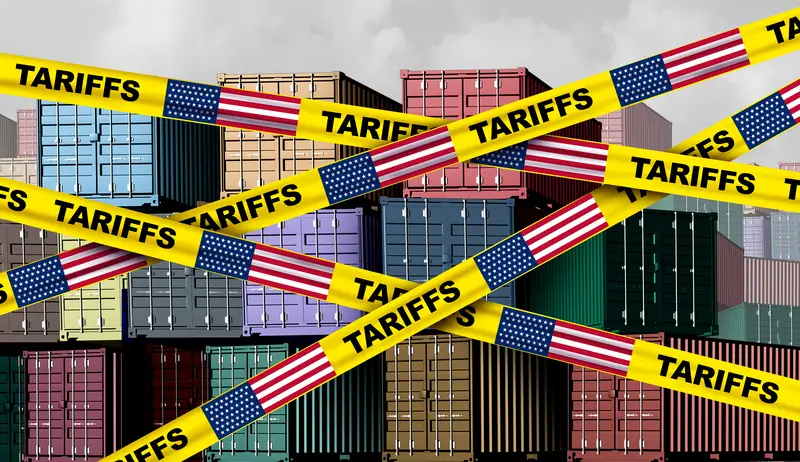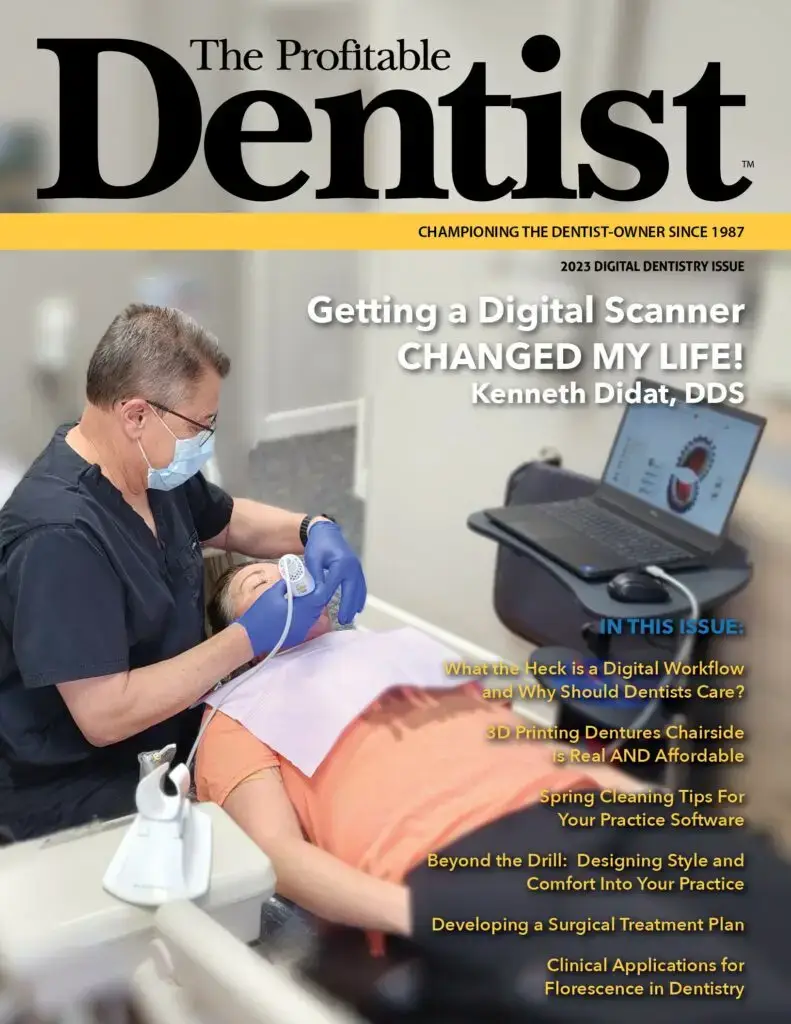As if the past several years haven’t been difficult enough, private practice owners now have one more surprise hitting their bottom line: tariffs.
If you think your practice is safe from the impacts of tariffs because you’re not a manufacturer or importer, you might be in for a surprise. While most of your practice supply chain will feel little impact, there is one area that’s very exposed…restorative.
The United States has recently imposed significant new tariffs on Chinese-made medical devices, which happens to include dental crowns, bridges, abutments, and implants. These new trade regulations, which went into effect in early 2025, are already being felt across the dental industry, particularly by private dental practices that rely on outsourced lab work for restorative procedures.
If you’re a solo or small group practice owner, these changes are more than just international policy, they’re real, measurable impacts on your profit margins, patient experience, and business decisions going forward.
Let’s break down what’s happening, how it affects you, and what you can do about it.
What’s Changing With the New Tariffs?
The U.S. Trade Representative (USTR) recently finalized a series of tariffs on imported medical devices from China, including those classified under the Harmonized Tariff Schedule codes for dental prosthetics like:
- 9021.21.40 – Artificial teeth (crowns, bridges)
- 9021.21.80 – Other dental restorations and parts
These items now carry an “additional” 25% import tax, which affects the cost for U.S.-based dental labs and dental practices that outsource manufacturing to China, which has become a common practice in the past decade due to lower labor and material costs.
This added tariff cost will need to be absorbed by the importing U.S. labs or passed on to their customers in the form of higher lab fees. Given that profit margins on import crown and bridge is far less than 25%, it’s unlikely labs will choose to literally lose money on every crown.
Therefore, dental offices are then faced with the decision to absorb the increased cost or pass it along to their patients. It’s important to note that dental insurance companies have not taken any action to increase reimbursements to cover these increased costs, so, if the practice chooses not to absorb it, their patients’ portion will increase.
A 25% tariff on a $79 crown is an additional cost of $19.75, driving the cost to $98.75, which would total $593 in additional lab costs for a practice seating 30 crowns per month.
While that may not be much in relative terms, it’s worth noting that a tariff of 246% on 1921.21.40 and 1021.21.80 is “paused” for 90 days, ending on July 17, 2025. Should that tariff go into effect, the price of a $79 import crown would climb to $243.34, for a total lab bill of $7,300 for 30 crowns a month…an additional hit of $4,930 to the bottom line every month…or over $60,000 for the year.
Then, there’s the issue of logistics. Generally, dental shipments are combined along with a huge variety of other goods on every overseas planeload of imports. Adapting to new tariff and customs rules hasn’t gone smoothly. Several large U.S. dental labs have already reported delayed or cancelled shipments, along with shipments held up in US Customs for days or weeks so far.
A shipment of hundreds or thousands of cases means a lot of calls to reschedule patients to future dates that can remain uncertain.
Large Dental Support Organizations (DSOs) may have the infrastructure, volume, and financial leverage to negotiate with labs or shift to tariff-free suppliers. But private practice dentists? You’re more likely to feel these increases directly and immediately.
What Can You Do About It?
While we can’t control federal trade policy, there are strategic steps you can take right now to protect your practice and remain profitable in an increasingly unpredictable economic environment.
1.) Have a Conversation With Your Lab – Start by asking your lab partner directly:
- Do you source your crowns and bridges from China?
- Are your prices going up due to tariffs, and how to you plan to handle that increased cost?
- Are there alternative materials or fabrication options to keep production in the U.S.?
- What’s the current turnaround time for restorations, and how do you plan to handle any slowdowns in delivery from China?
If they can’t give you clear answers, or if their pricing becomes unsustainable, it may be time to explore new lab partnerships.
2.) Audit Your Procedure Profitability
Now is a great time to review your actual costs for procedures that involve lab work. Look at:
- Lab fees
- Impression materials
- Chair time
- Rework or remakes
- Staff involvement
Then compare those costs to what you’re charging—and what you’re actually collecting after insurance write-offs. You may find that a few of your bread-and-butter procedures are no longer profitable unless you make adjustments.
3.) Re-Evaluate Your Fee Schedule
If it’s been more than 12 months since your last fee review, you’re overdue. Rising costs, including labs, supplies, and staffing, necessitate a regular adjustment of your fees to reflect the real cost of doing business. Be especially mindful of crown and bridge fees, which are directly affected by these tariff increases.
For insurance-based practices, consider creating in-office membership plans to reduce dependency on third-party reimbursement and allow for more flexible pricing.
4.) Consider Tiered Treatment Options
Instead of offering a single crown price, you might present tiered options:
- Premium crown with high-end esthetics (full-contour, esthetic zirconia or e.max)
- Standard PFM crown with moderate esthetics from a local lab
- Long-term temporary crowns for extended budget-sensitive cases
This gives patients more control while allowing you to protect your costs and margins.
5.) Explore Digital Dentistry and In-House Fabrication
Investing in CAD/CAM systems and in-house milling may not make sense for everyone, but if you have the case volume and staffing to support it, these tools can help reduce your reliance on third-party labs, improve turnaround time, and lower per-unit costs over the long term.
Digital dentistry also allows for more predictable workflows, less rework, and better documentation, all of which save money and time.
6.) Communicate With Patients Proactively
Patients may notice fee increases or longer treatment timelines. Be ready with a confident, honest explanation:
“We’re committed to delivering the best quality restorations, and recent changes in global supply chains have affected the costs of dental crowns. We’ve worked hard to keep your care affordable while maintaining the highest clinical standards.”
Transparency builds trust—and most patients will appreciate that you’re looking out for both their health and the integrity of your practice.
The Road Ahead: Unpredictability Is the New Normal
What makes these tariff changes especially challenging is that they are unpredictable and subject to change with little notice. Future trade agreements, geopolitical tensions, or changes in presidential administrations could raise, reduce, or extend these tariffs further.
As a practice owner, your job is to remain flexible and forward-looking. Build a resilient business model that can adapt to external economic forces, and focus on what you can control:
- Clear financial visibility
- Streamlined operations
- Strong vendor relationships
- Open patient communication
- Continual review of your pricing and profitability
Final Thoughts
Tariffs might seem like an abstract policy change, but their effects on the dental industry, and particularly on private practice, are very real. Dental crowns, bridges, and implants are core components of restorative care, and any disruption in their availability or cost ripples through the entire practice.
By understanding this rapidly evolving situation and taking proactive steps, you can not only weather this challenge but use it as a catalyst to tighten your systems, improve profitability, and offer better, more transparent care to your patients.
Now is the time to assess, adjust, and act. The practices that stay agile in moments like this are the ones that thrive, no matter what the global economy throws their way.




